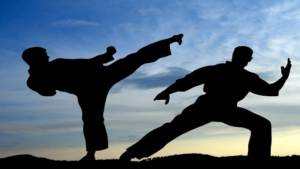Kashmir is known as the Paradise on Earth because of its beautiful mountains, valleys, springs, gardens, rich culture and heritage. Apart from being the heaven it is, Kashmir is also known for its traditional martial arts called Sqay Martial Arts. The history of this traditional art form goes back some thousand years back. It’s because of the inimitable beauty of Kashmir and its rich heritage, that Kashmir Tour Packages are always the top pick among travellers.
The Sqay martial arts evolved some 1000 years ago. The word Sqay comes from the Persian word “Knowledge of war”. Before 4012 BC, Sqay was used by the Kashmiris for self-protection and hunting of animals. It was later in 3905 BC that King Diya Dev trained his fighters in a defensive art form. It was Nazeer Ahmed Mir who introduced this martial art to Kashmir.
History of Kashmiri Martial Arts

Even though it sounds more like a mythology than history, the history of Sqay goes back to the early days of Kashmir. It is believed that Shaivite Snake worshipping people created this traditional art form before the invasion of Indo – Aryan. Later it was patronised by the King. The first evidence of the same can be found in the Muslim Period in the writings about Sabre fighting.
The popularity of this traditional Kashmiri Martial Arts declined during the colonial period and suffered the most during the Post-independence border conflict.
It was Nazir Ahmed Mir who introduced modern types of competition to this traditional Kashmiri Martial Art Form by taking influence from Karate and taekwondo. This effort has prevented this art form from going extinct. Later the International Council of Sqay and the Sqay Foundation promoted this game on a national level.
The Game of Sqay

The language used in Sqay for attack and defence is Kashmiri, which is translated to make it understandable for the non-locals. In Kashmiri Martial arts weapons such as single
Swords, double swords, free hand and shields are used. The sword used in Sqay is called “Tura” and is made of bamboo.
Sqay has two variants – one being the combat and the other being the artistic event. The artistic variant is further divided into 21 without music (khawanky) and others with music (Aerosqay). The martial art of Kashmir has been included in the 37th national games which are scheduled to be held in Goa, this is a great opportunity for the people of Kashmir.
The inclusion of martial arts in the national game is a big opportunity for the sports fraternity of Jammu and Kashmir. With its inclusion, the position of Jammu and Kashmir is surely going to see a dramatic increase.
Techniques and Rules of Sqay

The rules and regulations of the game vary depending on the gender and the age. The size of the arena and duration also play an important role in determining the technique and rules of the game. The game involves a lot of sparring, breaking and present patterns. The matches are divided according to the age and weight of the participants.
Sparring

Sparring takes place in 5 to 6.5 metres square. The player gets 12 points for proper technique in the permitted area. If the player executes the move correctly but slightly misses the mark then he gets 6 points. The use of excessive force is illegal and can result in disqualification.
Targeting the legs, head, arms and upper body is considered illegal. You can only strike with a stick and foot that too below the ankle. You cannot touch the eye, groin, hips or any uncovered area during the match. You can get your points deducted or even disqualified if you do not follow any of these rules.
The match ends immediately when the player attains 36 points in the match otherwise the player scoring more points wins. Each match or bout takes place for around 3 to 5 minutes but can be extended up to 5 to 7 minutes during a tie. In case of a toe a sudden death round takes place, the one who scores first is declared a winner.
Breaking

Breaking is generally used for training and demonstration. Anything except glass can be used, but the most common item used is board. The players are judged on their form, technique and the quantity of items broken by them. Each player is scored from 10.
Present Patterns

The present patterns are performed to improve muscle memory. They are permanent so continuous that moves can eventually be performed in combat without even thinking. The present pattern is conducted in a 5-metre square and the players are judged based on their stance, timing and perfection.
Conclusion
To sum up, Kashmiri Martial Arts Sqay is a representation of the region’s rich cultural legacy and age-old fighting methods. Focusing on self-defence, discipline, and agility, Sqay gives practitioners a comprehensive approach to both physical and mental well-being.
Sqay, a highly regarded art form that has been passed down through the years, is a tribute to Kashmir’s martial expertise and continues to flourish. Sqay is a sign of resiliency and heritage, encouraging practitioners to embrace its ageless knowledge and respect Kashmir’s martial lineage, whether for fitness, competition, or self-defence.


